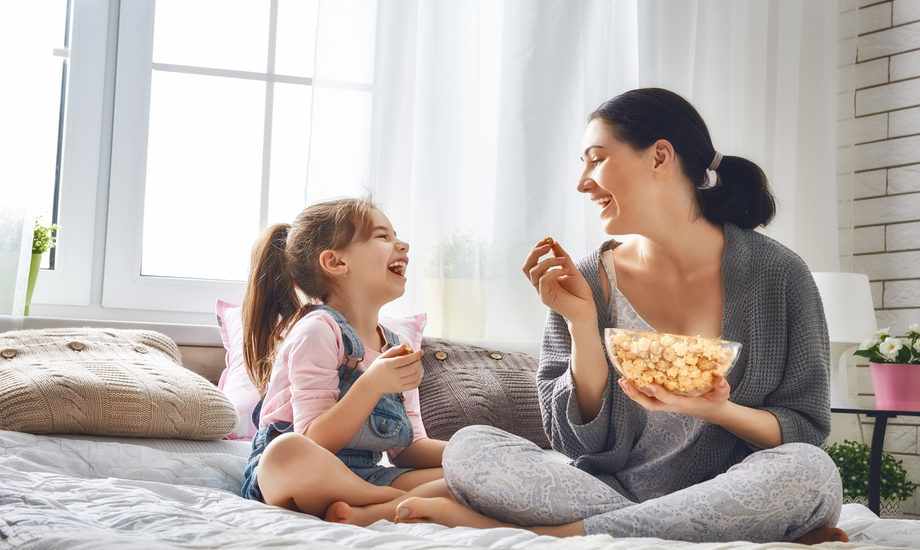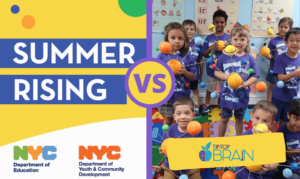Mindfulness has become something of a buzzword recently. Many of us are just now learning about mindfulness exercises and activities. The motivation for practicing mindfulness? It brings benefits to our health in every sense: emotionally, mentally, and physically. These age-old meditation techniques are awesome, but to our children they may seem awesomely strange. Mindfulness for kids brings all of the same benefits it does for adults. Thus, we’ve put together three activities that encourage mindfulness for kids (they’re so fun, trust us:)
Mindful Munching:
Supplies: Popcorn, Toppings
We all eat three square meals a day (at least), but how often do we stop to savor our meal? Through “mindful munching” kids slow their thoughts down and focus on the meal at hand. Yes, mindfulness for kids can be as simple as snacking! There’s no shortage of ways to facilitate mindful munching. One of my favorite adaptations of this activity is done with popcorn and a few of your favorite toppings (e.g., butter, olive oil, garlic, chocolate, salt, caramel, honey.)
Simply,
- Pop one bag of popcorn, and divvy it up into 8 small dixie cups or bowls.
- Then, choose one or two flavor combinations to season each cup. Now, the fun begins!
- Challenge your little one to identify the flavor of each popcorn by tasting each one. (For younger children, it may be worthwhile to give them sticky-notes with the flavor combinations written out for them, so all they’re left to do is match them.)
This activity encourages children to focus their senses solely on the snack at hand. No less, your child is training their palette and developing a sense of taste they like– or maybe don’t. While your child is mindfully munching, give ‘em some guidance by positing questions: Is that salty, sweet, or both? Is it spicy? What food or flavor does it remind you of?
I Feel…:
Supplies: Paper, Crayons/Colored Pencils
- First things first, have your child draw an outline of a brain on one sheet of paper, and a body on the other.
- Then, have your child create a color-coded key for different sensations (for instance, blue could mean cold, while red means warm.)
- With your child, slowly start shading in different areas of the body based upon what they notice and feel. For example, you might ask “Does your right foot feel cold?” and should they respond yes, they’d shade their right foot in blue.
Some additional sensory words you could use for your key may be: smooth or bumpy, hard or soft, tight or relaxed. Similarly, you can label different parts of the brain with your child’s favorite activities, places, or characters. Using a color-coded key with emotions, have your child shade how that “part of their brain” makes them feel (happy, energized, peaceful, calm etc.) Believe it or not, this activity can be pretty challenging, but nobody said mindfulness for kids would be easy!
Mindful Modeling:
Supplies: Playdough, Colored pencils, Paper
Like the cliché of a painter using a bowl of fruit as their subject, your child is going to be replicating an object artistically!
- Before you begin, choose a subject with complexity, either in shape or color (flat or 3-D is fine.)
- Now, ask your child to try and render their subject using whichever art supplies you have handy.
- Along the way, ask your child about specific features of their piece. For instance, if your model was an apple, you might compare the skin of the apple to the skin in their drawing or sculpture: How are they different? How are they similar?
Questions that exercise your senses, like sight and touch, is what mindfulness for kids comes down to.
All in all, it’s so important we instill skills like mindfulness in our children. Not only does mindfulness for kids benefit our health in the present and future, but it makes us feel happier and less-stressed too! That’s why at Tip-Top Brain, we incorporate mindfulness for kids and socio-emotional exercises into our daily breaks. When the kids in our lives feel good, we do too, so what’s to lose? Get to poppin’, sculpting, or drawing, wherever you start, you’re one step close to a healthier, happier state of mind.







